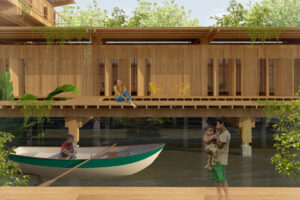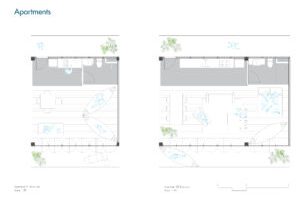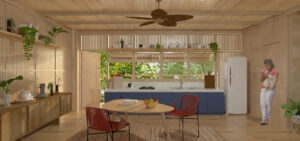The case presented is the creation of a local policy for housing diagnosis based on the action of Community Health Agents (ACS – Community Health Agents) that can be a model for Brazilian cities. The relationship between public health, quality of life and housing conditions was even more evident with the economic and sanitary crisis caused by the Sars-COV 2 pandemic. In Brazil, the housing scenario is experiencing one of the most critical moments in history, with cuts in federal resources and environmental disasters, which mainly affect the population of greater social vulnerability. Thus, the municipal government must promote policies that guarantee the right to decent housing. One of these strategies is the implementation of Technical Assistance in Social Interest Housing (ATHIS – Assistência Técnica em Habitação de Interesse Social). This policy is regulated in Brazil by Federal Law 11.888/2008. There is a direct relationship of hospitalizations in the Brazilian Unified Health System (SUS – Sistema Único de Saúde) caused by lack of basic sanitation, poor housing and urban quality – lack of infrastructure, clean water and insalubrity problems. This panorama increases the costs of Public Health and could be prevented with access to healthy housing. Therefore, it is necessary to bring the architects closer to the population in housing vulnerability. This close relationship between health and living conditions is essential in the intersectoral policy agenda, especially at the local level. Given this perspective, the Maringá core of the Paraná Department of the Institute of Architects of Brazil (IAB/PR – Núcleo Maringá do Departamento Paraná do Instituto de Arquitetos do Brasil), sponsored by the Council of Architecture and Urbanism of Brazil (CAU/BR – Conselho de Arquitetura e Urbanismo do Brasil), in partnership with the João Pinheiro Foundation (FJP – Fundação João Pinheiro), is creating a Municipal Housing Diagnosis Instrument (IDHM – Instrumento de Diagnóstico Habitacional Municipal) based on the action of Community Health Agents. These professionals will be trained to apply and, later, act as multipliers. This instrument is being designed from the methodology of the João Pinheiro Foundation, an institution that calculates the quantitative and qualitative housing deficits since 1995 in Brazil. The first case of application of the instrument is being carried out in the city of Maringá, Paraná state.
The main objective of the proposal is to obtain territorialized data on housing inadequacies in the municipalities and to integrate health and housing information systems. From the case of Maringá, the instrument can be incorporated into the SUS, covering 63,62% of the Brazilian population that is served by the Family Health Strategy (Estratégia Saúde da Família), according to data from the Ministry of Health of Brazil for 2021. The information collected by Community Health Agents in the monthly visits and registrations of the families’ houses is not sufficient to guide specific housing policies. There is a lack of information such as identification of cohabitation, improper water storage, inadequate coverage, lack of exclusive sanitary units, excessive rent burden, and lack of accessibility for people with disabilities and the elderly, among others.
Data collected by the Health Agents will be automatically integrated with the local housing information system. This information will support the application of resources in promoting intersectoral public policies between Health and Housing, recognizing the role and social function of the Architect and Urbanist. Diagnoses will also assist in the development of Local Plans for Housing of Social Interest (PLHIS – Plano Local de Habitação de Interesse Social) and the distribution of public resources according to intervention needs contributing to the reduction of urban inequalities and the right to health, well-being and decent housing.
The project is part of the forum theme as a case of mobilizing public and private agents from various disciplinary fields to create an innovative intersectoral policy to diagnose the housing situation at the local level. Housing diagnoses carried out in Brazil are developed based on statistical data, mainly with information collected by the Brazilian Institute of Geography and Statistics (IBGE – Instituto Brasileiro de Geografia Estatística) in the Demographic Censuses. These censuses are conducted at a periodicity of 10 years. The project, developed by the core Maringá of IAB, proposed a territorialization of housing data, identifying the needs for housing improvements, with continuous monitoring of the housing situation of the population through the monthly visits of Community Health Agents. One of the impacts, in addition to the integration of health and housing systems in the city of Maringá, is the creation of a methodological and the design of training material, capable of becoming a model for Brazilian cities. Actions like this, which seeks to integrate housing issues into the public health system in Brazil, could be a way to popularize the architect’s profession. The creation of the Municipal Housing Diagnosis Instrument aligns with the Sustainable Development Goals elaborated by the United Nations (UN) – mainly SDG 3 “Good Health and Well-Being”, SDG 6 “Clean Water and Sanitation” and SDG 11 “Cities Sustainable and Communities” – stimulating and contributing to the promotion of Public Health and Housing Policies for the Brazilian population.








